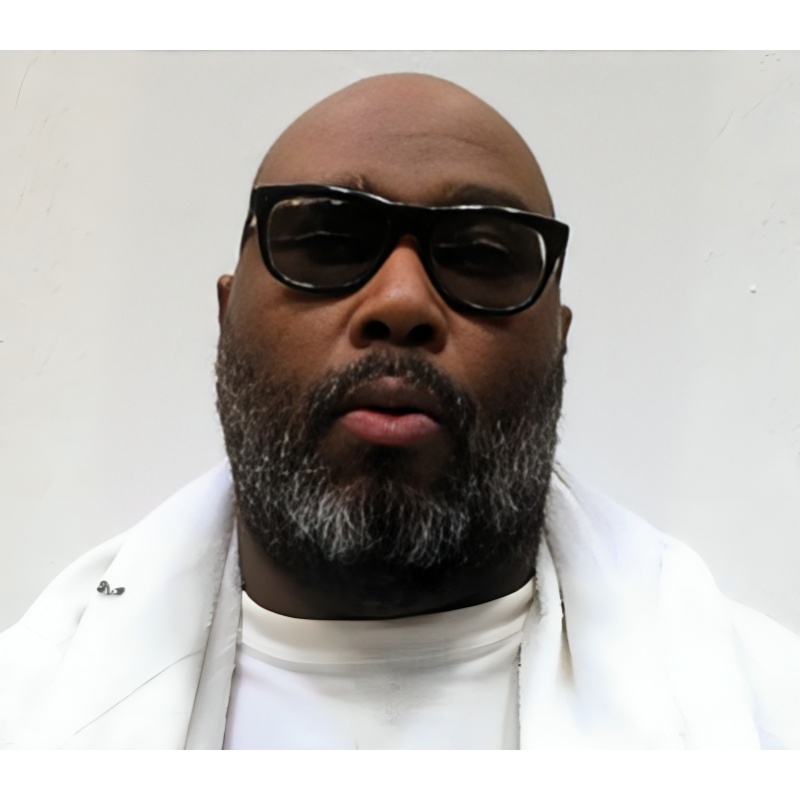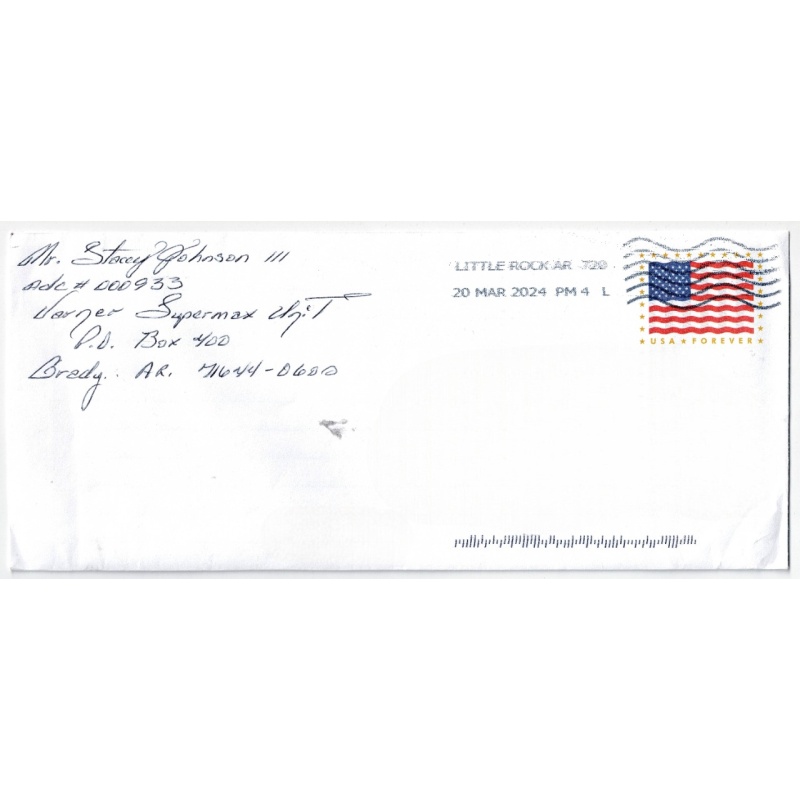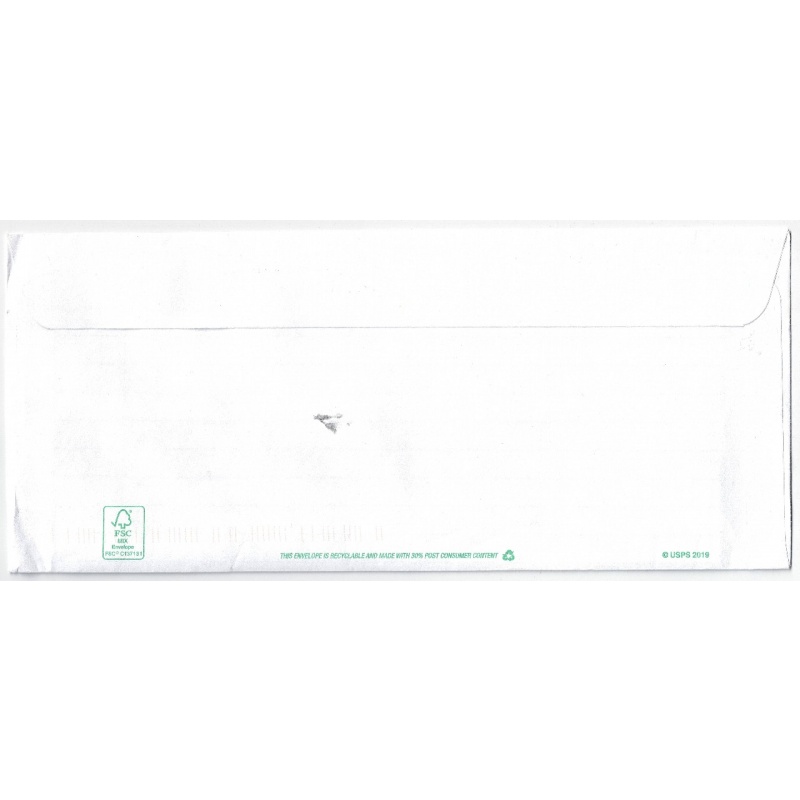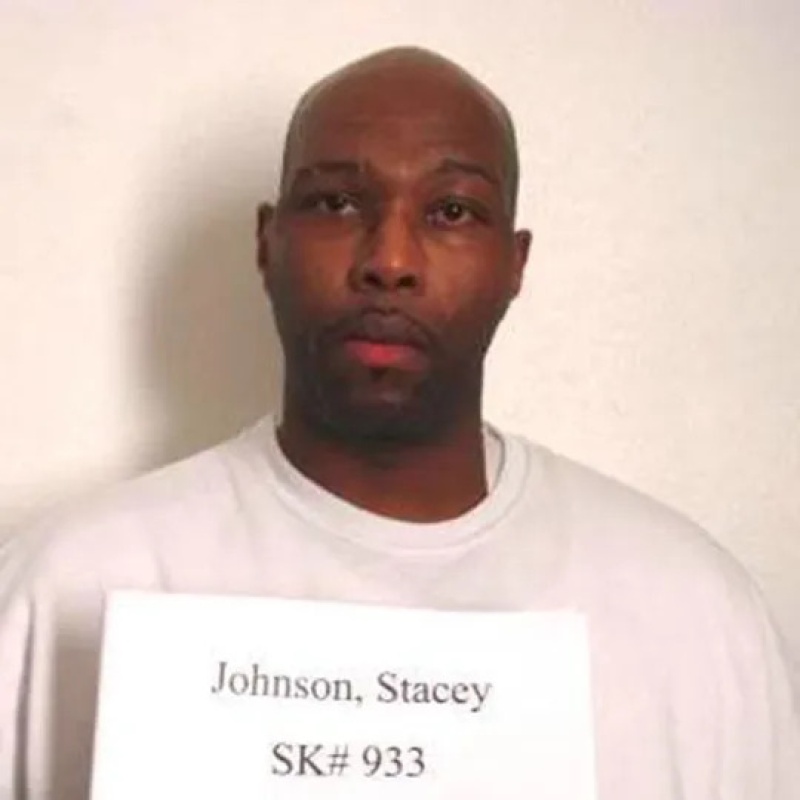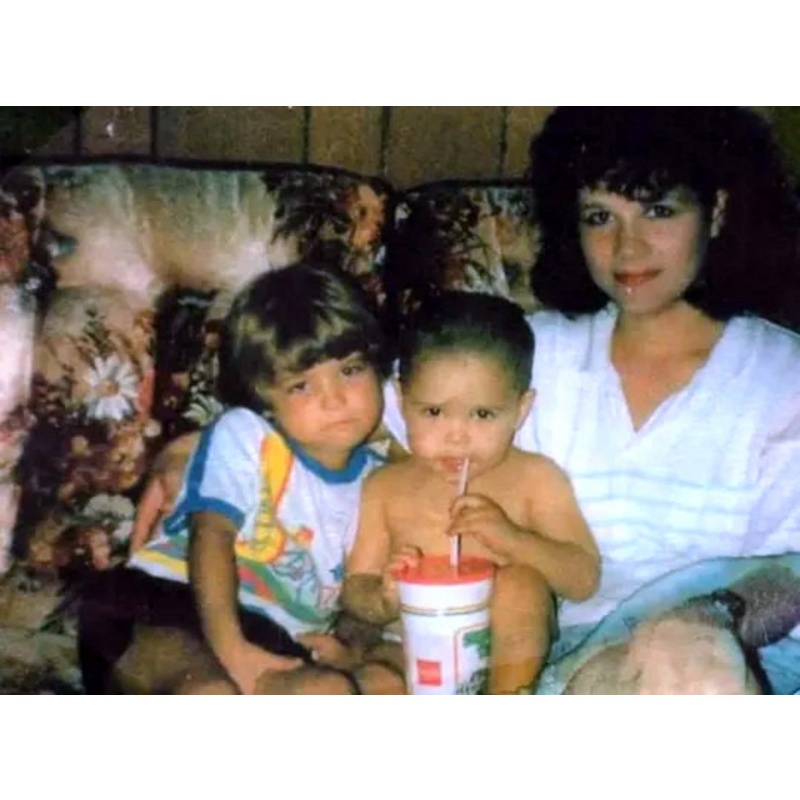STACEY EUGENE JOHNSON | Johnson, 53, came within a day of being executed in 2017 for the 1993 murder of Carol Heath in De Queen, Arkansas | Autographed Letter, Signed
LongfellowSerenade 27
Stacey Eugene Johnson is a death row inmate in Arkansas who was convicted of the murder of Carol Heath in a 1993 home invasion. He has maintained his innocence and has been seeking new DNA tests that he believes could clear him of the charges.
In June 2023, a federal appeals court ruled that Johnson may sue the state of Arkansas in his push to have new DNA tests run. Johnson posits that DNA evidence may implicate Heath's boyfriend, Brandon Ramsey, as her actual killer. He has spent a quarter-century on death row.
Johnson was one of eight Arkansas prisoners scheduled for an unprecedented string of back-to-back executions in 2017 by then-Gov. Asa Hutchinson. However, the day before Johnson was to be put to death, the state Supreme Court stayed his execution in a 4-3 decision and remanded the case to a trial court for a hearing on his petition requesting additional testing of physical evidence found at the crime scene.
The case is ongoing, and the outcome of the DNA tests could potentially affect Johnson's conviction.
$20.00
- Postage
-
$0.00 to United States
Standard Shipping
Get Additional Rates
- Select Country
- Zip/Post Code
- Quantity
Description
Mr. Stacey Johnson III. Autographed Letter, Signed. Handwritten, Commercial #10 (4.125 × 9.5 envelope). Little Rock AR. Pmk: March 20, 2024. Content unknown. SEALED.
Classification: Murderer
Characteristics: Rape
Number of victims: 1
Date of murder: April 1, 1993
Date of birth: November 26, 1969
Victim profile: Carol Jean Heath
Method of murder: Cutting her neck, strangulation, and blunt-force head injuries
Location: Sevier County, Arkansas, USA
Status: Sentenced to death on September 23, 1994
Carol Heath was brutally murdered in her duplex apartment in DeQueen, Arkansas on either the night of April 1, 1993, or the early morning hours of April 2, 1993. She was beaten, strangled, and had her throat slit while her two young children, Ashley, age six, and Jonathan, age two, were home. The facts regarding the murder and its aftermath are gleaned from pretrial and trial testimony.
At approximately 6:45 a.m. on April 2, 1993, Rose Cassidy, the victim's sister-in-law, knocked on the victim's door but did not receive an answer. Because the door was unlocked, she entered and found Carol Heath's partially nude body lying on the living room floor in a pool of blood. She ran across the street to call the police and then returned to check on her niece (Ashley) and nephew (Jonathan), whom she saw looking out the bedroom window. Cassidy testified that she asked Ashley what had happened. Ashley responded, according to Cassidy: "[S]omebody had broke in, and I said who, and she (Ashley) said a [b]lack man." The victim was white.
Sergeant Keith Tucker of the DeQueen Police Department testified that he found Carol Heath's body nude except for a t-shirt that had been pushed up around her neck. He stated that her body was located between a couch which was tilted up on its back legs and a coffee table which had apparently been moved toward the middle of the room. DeQueen Chief of Police James Smith arrived at the apartment later. He testified that when he pulled the t-shirt away from the victim's neck, he saw that her throat had been slashed.
Sergeant Keith Tucker of the DeQueen Police Department testified that he found Carol Heath's body nude except for a t-shirt that had been pushed up around her neck. He stated that her body was located between a couch which was tilted up on its back legs and a coffee table which had apparently been moved toward the middle of the room. DeQueen Chief of Police James Smith arrived at the apartment later. He testified that when he pulled the t-shirt away from the victim's neck, he saw that her throat had been slashed.
Dr. Frank Peretti, an associate medical examiner for the State Crime Laboratory, testified that Carol Heath's death was caused by cutting her neck, strangulation, and blunt-force head injuries. He stated that her attacker left a four-inch by two-inch cut wound on her neck that went one-quarter inch into her spine. He observed that she had several bruises and abrasions on her head and face, that she had injuries on her hands and arms consistent with defensive wounds, that she had a bite mark on the nipple of her right breast and an abrasion on her left breast, and that there was a one-quarter-inch contusion on her right labia minora. Dr. Peretti could not conclude, based on the physical evidence, that she had been either sexually assaulted or raped.
Officer James Behling, a criminal investigator with the DeQueen Police Department, testified that he observed a pair of panties next to Carol Heath's right thigh. He noted an area of lighter-colored liquid between and around the legs and below the genital area of the victim. An empty douche bottle and an empty "Lifestyles" condom box were found in the bathroom sink.
On April 5, 1993, Kenneth Bryan found a purse in the woods between DeQueen and Horatio which he later realized belonged to the victim. He took Officer Behling to the location. Officer Behling examined the area and found a bloody pullover green shirt, a bloody white t-shirt, and a bloody towel. Lisa Sakevicius, an expert with the State Crime Laboratory's trace evidence section, testified that hairs microscopically similar to the victim's hair were found on all three of these items. She further testified that hairs retrieved from under the victim's left breast, from the floor by the victim, and from the white t-shirt were of Negroid origin. Jane Parsons, a forensic serologist, testified for the State that no semen was found in connection with the victim. She admitted that the finding of semen would be unlikely, if the perpetrator used a condom and douched the victim.
DNA evidence was introduced at trial. Melisa Weber, a staff molecular biologist at Cellmark Diagnostics, conducted a Restriction Fragment Length Polymorphism [RFLP] test on the green shirt for the State and testified that to a reasonable degree of scientific certainty the blood matched that of Carol Heath. She also conducted a Polymerase Chain Reaction [PCR] test on several items, including the white t-shirt found in the park, a cigarette butt found in the green shirt, and hairs taken from the body of Carol Heath and near to where the body was located. With respect to the white t-shirt, Weber testified that the victim could not be excluded as the source of the blood and that the probability of this DNA having come from another Caucasian was 1 in 12,000. With respect to the cigarette butt and hairs, Weber opined that Johnson could not be excluded and that the probability that another African-American was the donor of the DNA in question was 1 in 250.
Officer Hayes McWhirter, an investigator with the Arkansas State Police, talked with the victim's daughter, Ashley Heath, on the afternoon of April 2, 1993. Also present at the time was Cynthia Emerson, a supervisor with the Department of Human Services. Officer McWhirter made the following notes from that conversation and used these notes to refer to when he testified at the pretrial hearings and at trial:
Ashley stated her mother and I were on the couch when someone knocked on the door. She got up and opened the door. The picture No. 3, Stacey Johnson, is the one that came in the door. Ashley looked at six different pictures of black males. Mother likes Branson. He works at In Your Ear. The black male asked where Branson was. The black male used a girl sounding name. He had on a black hat with something hanging down in the back. He had on a green shirt and sweater. When they were talking, the black male said he had just got out of jail. The black male was mad at mother for dating Branson. He had been over two other times, but it was a while or a long time ago. The black male had about as much hair as [McWhirter]. I saw them fighting. Then I saw mother laying on the floor. I saw the black male leave and he got up and he got in a brown truck, I think. I saw a knife and a gun. The brown truck was parked beside the house. Mother looked out the window. When he knocked, then she let him in. While mother was laying on the floor, the black male walked into the bathroom. We were hiding in the closet. I came out the door to the bathroom and the black male had a knife in his hand beside mommy. She was on the floor bleeding. After he left, I went in and saw momma bleeding. Jonathan looked at mommy twice. She was covered in blood. We went to bed and then this morning when someone knocked on the door, I was scared to open the door. When Rose screamed, I knew she saw mommy with blood all over her. Every time I saw the black male, he had clothes on.
Officer McWhirter testified that he handed Ashley a stack of seven photographs, and she picked Johnson out of the photo lineup twice. Johnson was subsequently arrested in Albuquerque, New Mexico.i
VIDEO: The Mass Execution In Arkansas: Stacey Johnson's Case | https://youtu.be/IMUMhTgrNPQ
Archiving Protocol:
• Handled with White Gloves ab initio
• Photo Pages/Sheet Protectors: Heavyweight Clear Sheet Protectors, Acid Free & Archival Safe, 8.5 × 11, Top Load
• White Backing Board—Acid Free
Shipping/Packaging: Rigid Mailer 9.5 × 12.5. White, self seal, stay flat, kraft cardboard, no bend. Each rigid mailer is made of heavy cardboard, which has strong resistance to bending and tearing. Thicker that the USPS mailers. Shipping cost never more than it absolutely has to be to get it from me to you.
i Blanco, J. I. (no date) Stacey Eugene Johnson: Murderpedia, the encyclopedia of murderers, Stacey Eugene Johnson | Murderpedia, the encyclopedia of murderers. Available at: https://murderpedia.org/male.J/j/johnson-stacey-eugene.htm (Accessed: 27 March 2024).
Payments & Returns
- Payment Methods
- PayPal, Money Order
Postage & Shipping
- Item Location
- 54911, Wisconsin, United States
- Ships To
- Worldwide
- Pick-ups
- No pick-ups
- Returns Accepted
- No

